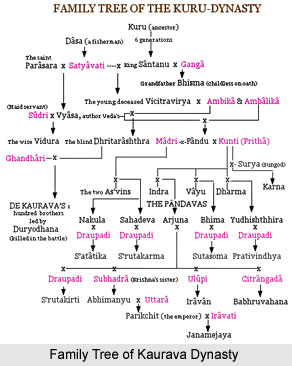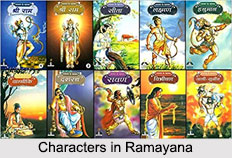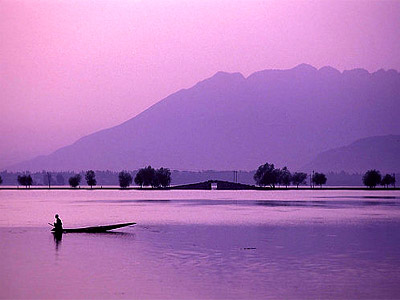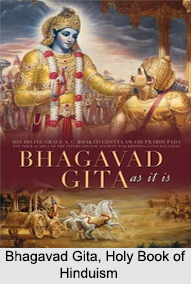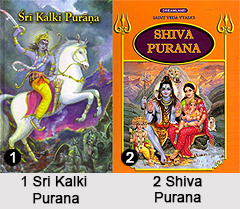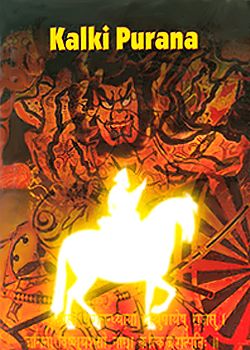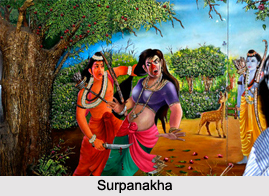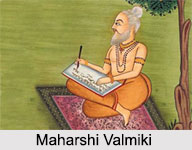 Valmiki is celebrated as the harbinger of Sanskrit literature. He is the author of the epic, Ramayana. He is referred to as the `adikavi`, the innovative creator of the Hindu `sloka`, a verse form in which most of the great epics such as Ramayana, Mahabharata, Puranas, and other works were created. He was the only person in ancient India who was the scholar in both Sanskrit and Tamil.
Valmiki is celebrated as the harbinger of Sanskrit literature. He is the author of the epic, Ramayana. He is referred to as the `adikavi`, the innovative creator of the Hindu `sloka`, a verse form in which most of the great epics such as Ramayana, Mahabharata, Puranas, and other works were created. He was the only person in ancient India who was the scholar in both Sanskrit and Tamil.
Early Life of Valmiki
Valmiki was a Brahman by birth belonging to the family of Bhrigu. Valmiki was born as Agni Sharma. Valmiki was born with legendary tones and strings to become a Hindu sage. He was the 10th child of Pracheta. Maharshi Valmiki belongs from a Kirata Bhil community, which was essentially a backward caste community. According to myth, once he met with the great sage Narada and had a conversation with him on his duties. Motivated by Narada`s words, Agni Sharma began to perform self-punishment and recited the word "Mara" which meant "kill". As he performed self-punishment for numerous years, the word became "Rama", the name of Lord Vishnu. Huge anthills formed around Agni Sharma and this earned him the name of "Valmiki".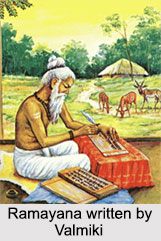
Incarnation of Valmiki
Vishnudharmottara Purana says that Maharshi Valmiki was born in the Treta Yuga as an appearance of Lord Brahma who composed the epic Ramayana. He was later reincarnated as Tulsidas, who wrote the famous Ramcharitamanas, which was an Awadhi-Hindi description of the epic Ramayana.
Works of Valmiki
Valmiki used a lot of descriptions and metaphor in his works. His epics are very expressive. He used a mixture of short and long sentences that gives resourcefulness to his works. In one place, 38 lines (19 verses) make a single sentence. Perhaps the earliest retelling of Valmiki`s poem can be found in the pages of that vast ocean of stories that one acknowledges as the Mahabharata. When Dwaipayana-Vyasa, more popularly known today as Ved Vyas, composed his equally legendary epic, he retold the story of the Ramayana in one passage.
Maharishi Valmiki is acknowledged by various Indian communities as the author of the "Yoga Vasistha"; this specific piece of work was instructed to Lord Rama when he had turned cynical towards the world at large. The "Yoga Vasistha" is an unsurpassed piece of text which discusses a broad array of philosophical issues. Moreover, it appears to have been penned more than 5000 years ago. In Valmiki`s hermitage he taught both girl and boy students. Valmiki is also known to have given Sita shelter after her deportation from Ayodhya.
Legends of Valmiki
Approximately three thousand years ago, Valmiki was residing in a remote forest ashram, practising asceticism with his disciples. Some days later, Valmiki witnessed a hunter, killing a "kraunchya" (crane) bird. The crane`s partner was left disheartened and shed tears ceaselessly. Valmiki was overpowered by anger at the hunter`s action and grieved at the bird`s loss. After his anger and sorrow were cooled down, he was in a mood to question his outrage. After so many years of practising meditation and asceticism, he was not successful to master his own emotions.
For a while he had abandoned all hope, but then he recollected the story Narada had recited to him. He thought about the significances of the story, about the options weighed by the protagonist and how he had indeed demonstrated great command over his own thoughts, words, deeds and feelings. Valmiki felt inspired by the reminiscence and was filled with a calm composure, such as he had never felt before. As he recalled the tale of that perfect man of whom Narada had spoken, he discovered that he was enumerating it in a specific metre and rhythm. Right away, Valmiki resolved to compose his own version of the story, using the new form of metre, that others might hear it and be as invigorated as he was.
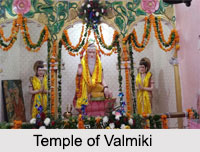 After all, this was not his story; it was a tale told to him; a tale of a real man and real events. At this point, Valmiki was visited by Lord Brahma himself. The Creator of the universe assured him to set his worries apart and begin framing the work he had in mind.
Lord Brahma instructed Valmiki to recite the tale of Rama as he had heard it from Narada. Lord Brahma also instructed him to recite those deeds of Rama, his adventures, his battles, the acts of Sita etc. Valmiki had that intention to write as per instructed, so that Rama`s tale may prevail on earth for as long as the mountains and the rivers exist.
After all, this was not his story; it was a tale told to him; a tale of a real man and real events. At this point, Valmiki was visited by Lord Brahma himself. The Creator of the universe assured him to set his worries apart and begin framing the work he had in mind.
Lord Brahma instructed Valmiki to recite the tale of Rama as he had heard it from Narada. Lord Brahma also instructed him to recite those deeds of Rama, his adventures, his battles, the acts of Sita etc. Valmiki had that intention to write as per instructed, so that Rama`s tale may prevail on earth for as long as the mountains and the rivers exist.
He began to write his poem. He titled it, "Rama-yana", meaning literally. The first thing Valmiki realised after wrapping his composition was that it was incomplete. During his time and age, a bard would generally recite his compositions himself, possibly earning some favour or payment in coin or kind. But Valmiki knew that while the structure of the story was his creation, the story itself belonged to all his countrymen. He recalled Brahma`s exhortation that Rama`s story must prevail on earth for as long as the mountains and the rivers exist. Hence, he taught it to his disciples, among whose numbers were two young boys whose mother had sought refuge with him years ago. Those two boys were Luv and Kusa. In time, destiny brought them before the very Rama illustrated in the poem. Rama recognised at once that the poem mentioned him and comprehended that these boys could be none other than his sons by the ostracised Sita. Valmiki himself then appeared before Rama and adjured him to take back Sita.
Valmiki`s Sanskrit rendition of the tale was a luminous work under any parameter, ancient or modern. Its appeal, beauty and originality are honestly matchless. It is a true masterwork of Indian literature, the `adi-kavya` which stands as the fountainhead of Indian cultural proof.
Temples of Valmiki
An area in Chennai, Tiruvanmiyur is said to receive its name from Sage Valmiki, "Thiru-Valmiki-Oor". There is atemple for Valmiki located in this place, which is believed to be 1300 years old.
Valmiki was truly a Maharshi. There is a community called Balmiki community who worship Valmiki as their predecessor and God. The community is found in Gujarat, Punjab, and Rajasthan.













